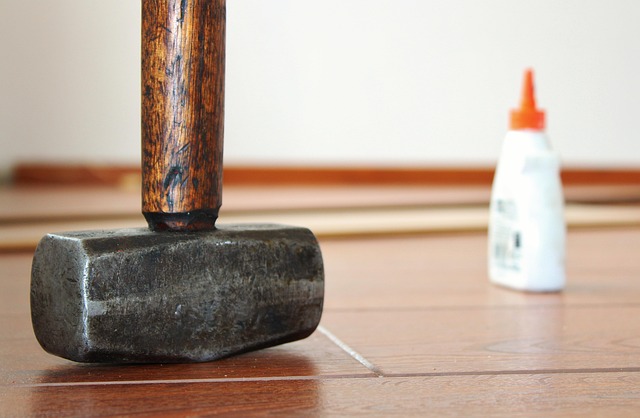Glue Laminated Beams (GLBs), an advanced wood product, offer exceptional strength and durability through strategic layering of veneers bonded with powerful adhesives. Top manufacturers prioritize sustainability, utilizing local timber and precise engineering for diverse construction applications. Key factors affecting GLB quality include wood type, adhesive compatibility, manufacturing techniques, beam design, and handling, making them a preferred eco-friendly option when cost-effective. Definition and tailored advice available at unalam.com.
“Discover the world of Glue Laminated Beams: a revolutionary structural element transforming construction and engineering. In this comprehensive guide, we unravel the glue laminated beam definition and its manufacturing process. Explore the top global manufacturers and their unique production techniques. Understand the factors crucial for ensuring quality and reliability. Delve into diverse applications, from robust structural support to innovative design possibilities, highlighting the benefits of these beams in modern construction.”
- Understanding Glue Laminated Beams: Definition and Process
- Top Global Manufacturers and Their Production Techniques
- Factors Influencing Quality and Reliability of Laminated Beams
- Applications and Benefits in Construction and Engineering
Understanding Glue Laminated Beams: Definition and Process

Glue Laminated Beams, also known as GLB, are engineered wood products created through a specialized process that involves binding multiple layers of wood veneer together with strong adhesives. This innovative construction method has transformed the way we build, offering a versatile and robust alternative to traditional solid timber beams.
The process begins by selecting high-quality wood veneers from sustainable sources. These veneers are then carefully layered, often in a cross-grain orientation, to ensure maximum strength and stability. Advanced adhesives are applied between each layer, forming a strong bond that surpasses the properties of individual veneers. After application, the laminated sheets are pressed under pressure and heat, further strengthening the glue lines. This meticulous process results in beams with exceptional load-bearing capabilities, making them ideal for various construction applications. From residential buildings to commercial structures, GLBs offer advantages such as reduced weight, increased span capabilities, and improved structural efficiency while maintaining superior strength and durability. Visit us at 18 Clifton St, Unadilla, NY 13849 anytime to learn more about this remarkable product and its optimal use in modern construction techniques. How do glue laminated beams work? Optimizing dimensions of glue laminated components plays a crucial role in ensuring their effectiveness, while understanding factors affecting glue laminated beam design is vital for maximizing their structural potential in residential and commercial settings alike.
Top Global Manufacturers and Their Production Techniques

The global market for glue laminated beams (GLB) is dominated by several manufacturers who have perfected the art of producing high-quality, durable wooden structures. These top manufacturers employ advanced production techniques, combining traditional craftsmanship with modern engineering to meet the diverse needs of the construction industry. Understanding their methods and the key requirements for GLBs is essential for ensuring long-term care for these glued wooden structures.
One of the primary factors that set these leading brands apart is their focus on sustainability and eco-friendly practices. They prioritize using locally sourced timber, ensuring responsible forestry management to maintain a consistent supply of high-quality raw materials. Furthermore, their pricing strategies consider various factors such as market fluctuations, logistics, and the specific requirements of each project. For instance, specialized glue formulations, unique laminating techniques, and precise engineering can influence the final cost of GLBs, making them suitable for both residential and commercial applications. You can explore more about these manufacturers and their innovative approaches at unalam.com.
Factors Influencing Quality and Reliability of Laminated Beams

The quality and reliability of glue laminated beams, also known as GLB or Laminated Wood Beams, are significantly influenced by several factors. Firstly, the type and quality of wood used in the lamination process play a crucial role. Different tree species, such as Douglas Fir or Spruce, offer varying levels of strength and dimensional stability, directly impacting the final product’s performance. Secondly, the adhesive used for lamination—typically strong synthetic glues—must be chosen based on compatibility with the wood types to ensure optimal bonding.
Additionally, manufacturing techniques like pressure and temperature control during lamination are essential. Consistent and precise conditions help produce beams with uniform strength and reduce the risk of delaminating or warping. The design and layout of the beam, including the number of layers and their orientation, also contribute to its structural integrity. Furthermore, proper storage and handling practices after production are vital to maintain the beams’ quality, especially for commercial applications where these eco-friendly structural solutions are increasingly preferred. When considering the cost analysis, understanding these factors helps in determining when to use glue laminated beams, making them a viable option for various construction projects. For more insights, visit us at unalam.com.
Applications and Benefits in Construction and Engineering

Glue laminated beams, as the name suggests, are structural elements created by gluing together multiple layers of wood. This advanced engineering technique has revolutionized construction and engineering projects across various sectors. The applications of glue laminated beams are diverse and offer numerous benefits, making them a preferred choice for modern-day builders and architects.
In residential construction, these beams provide an efficient and sustainable solution. Their superior strength and durability allow for longer span capabilities, enabling designers to create open floor plans without the need for additional support columns. This not only optimizes space but also reduces material waste. Moreover, glue laminated wood has a lower environmental impact compared to traditional steel or concrete structures, making it an eco-friendly option. When properly designed and manufactured, these beams can withstand extreme loads, ensuring safety and stability in all types of weather conditions. To discuss your specific needs and how glue laminated beams could benefit your project, give us a call at (607) 369-9341.
Glue laminated beams, as defined by their manufacturing process, offer unparalleled strength and versatility for construction and engineering projects. Top manufacturers worldwide employ advanced techniques, utilizing high-quality raw materials and meticulous production processes to ensure consistent quality and reliability. This article has explored the global landscape of these manufacturers, highlighting their unique approaches while emphasizing the factors critical to producing superior laminated beams. By understanding both the applications and benefits of glue laminated beams, professionals in the construction and engineering sectors can harness this innovative technology to create lasting structures.














